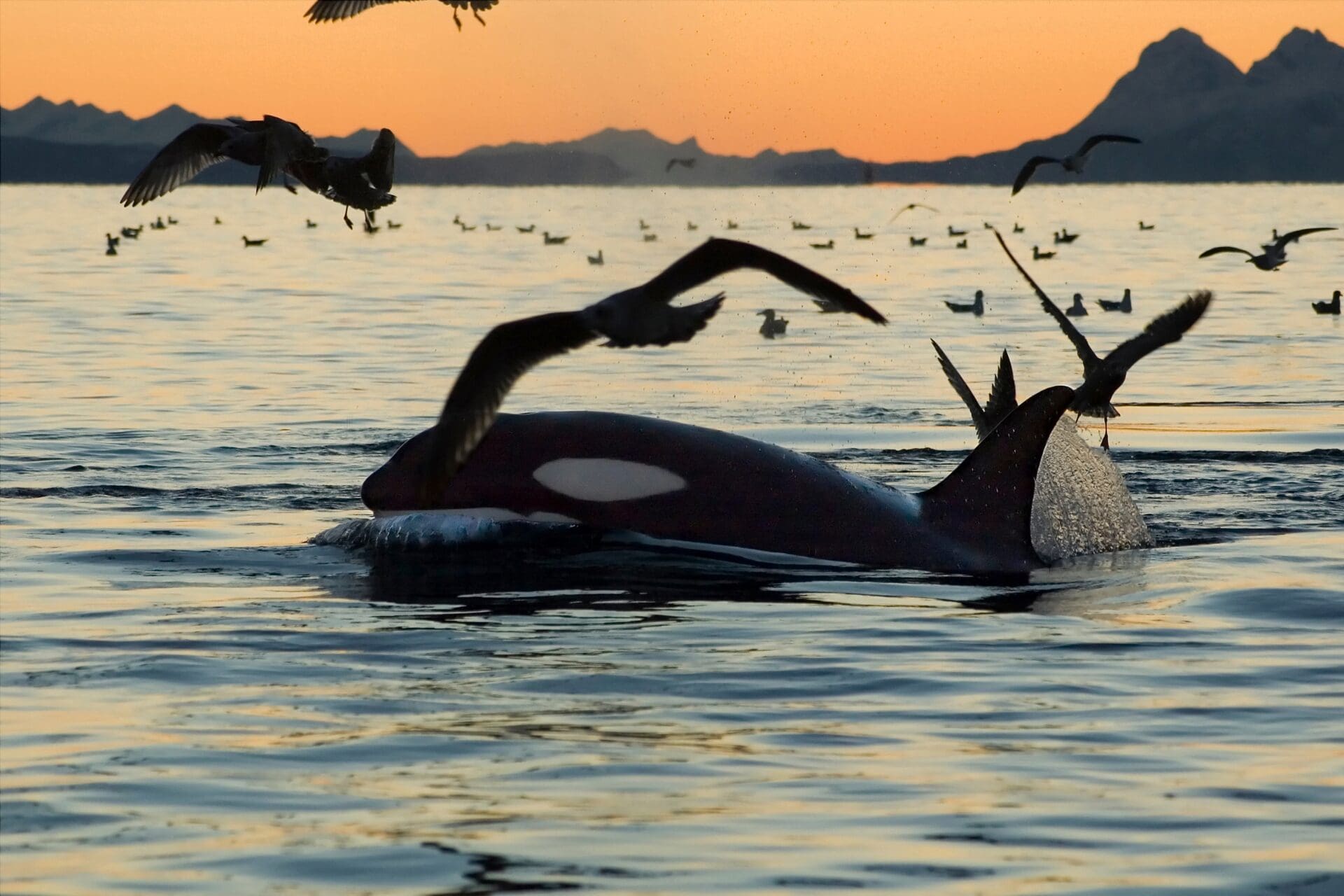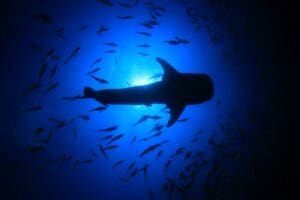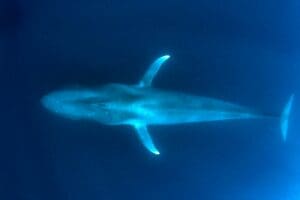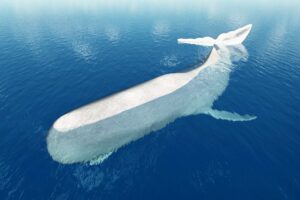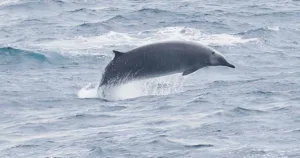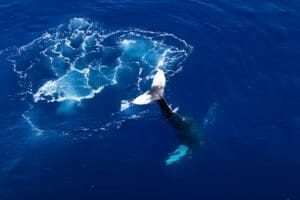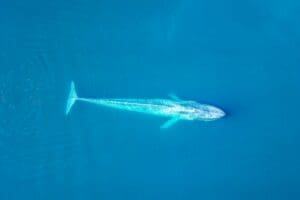Dive into the Secrets of the Whale Life Cycle
Imagine the thrill of witnessing these incredible creatures in their natural habitat. Whale watching is not just an activity. It’s an experience that connects us with the ocean’s vastness and the mysteries beneath its surface.
Embarking on a journey through the whales’ life cycle offers a glimpse into the extraordinary world of these ocean giants.
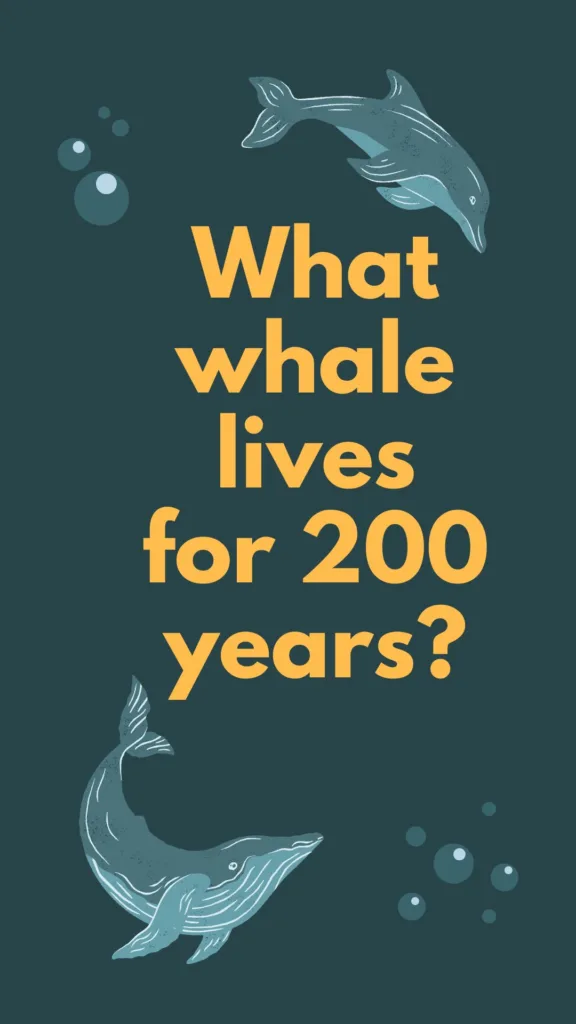

What are whales’ life cycle stages?
Whales embark on a remarkable journey through life, beginning with birth, where they enter the world fully conscious and able to swim. The infancy stage follows, characterized by rapid growth fueled by the mother’s rich milk. This period is crucial for developing strong bonds and learning basic survival skills. As they progress into the juvenile phase, whales explore more of their environment, honing their hunting techniques and social interactions. Maturity marks a significant milestone where whales can reproduce, contributing to their species’ continuity. The breeding stage involves intricate behaviors and, for some species, the formation of deep, lasting connections or seasonal partnerships. Each stage is vital, showcasing the adaptability and resilience of these ocean giants.
Whale life cycle diagram: Visualizing the stages
A whale life cycle diagram serves as a powerful educational tool, illustrating the journey from birth to adulthood. It highlights key developmental milestones and the transition between stages, providing a clear visual understanding of how these majestic creatures grow and thrive in the marine ecosystem.
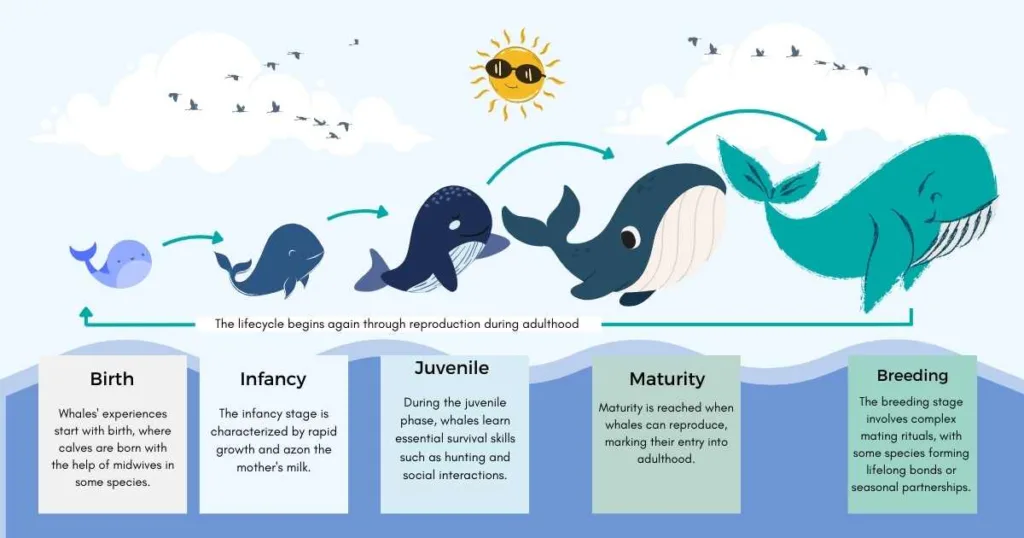

Whale life cycle facts: Uncovering the truth about whale development
From the moment of birth, whale calves are thrust into a fast-paced growth period, relying on their mothers’ milk for nourishment. As juveniles, they learn essential skills for navigation and hunting, which are crucial for their survival and independence. These developmental stages are fascinating, shedding light on the complex behaviors and strategies whales use to thrive in their aquatic world.
Lifespan of a whale: How long can a whale live?
The lifespan of whales is as diverse as the species themselves. Blue whales, the largest animals on Earth, grace the oceans for up to 90 years. Humpback whales, known for their majestic songs, live around 50 years. These lifespans reflect not just the biological capabilities of these mammals but also the challenges they face in their natural habitats.
How long do different species live?
Whale lifespans vary widely. Blue whales can live up to 90 years, while orcas have been known to reach 100 years. Remarkably, bowhead whales surpass this, living over 200 years, making them the Methuselahs of the mammal world. These variations in lifespan are a testament to the diverse strategies whales have evolved to survive in the ocean.
How many days does a whale live?
Translating a whale’s lifespan into days puts into perspective the vast timescales these creatures inhabit our planet. For a blue whale living up to 90 years, that equates to approximately 32,850 days, a testament to their longevity and the enduring mystery of their lives beneath the waves.
Comparing whale life cycle and reproduction across species
The reproductive strategies of whales are as varied as their lifespans. Killer whales exhibit complex social structures that influence their breeding behaviors, while blue whales tend to be more solitary in their reproductive habits. Whale sharks, on the other hand, lay eggs, presenting a stark contrast to the live births of mammalian whales. These differences highlight the adaptability and diversity of life in our oceans.
Can whales live up to 100 years?
Indeed, certain whale species, such as orcas and bowhead whales, not only reach but can exceed 100 years of age. This incredible lifespan is a reflection of their evolutionary success and the complex ecosystems they inhabit.
What whale lives for 200 years?
The bowhead whale stands out for its exceptional longevity, with individuals living for over 200 years. This remarkable lifespan makes them one of the oldest living mammal species, offering invaluable insights into longevity and health.
What is the longest-lived whale?
The bowhead whale holds the title of the longest-lived whale species. Documented research and recovery of ancient harpoons have confirmed lifespans of over 200 years, making them a subject of scientific fascination.
How long do whale babies stay with their mothers?
The bond between a whale mother and her calf is profound, with calves staying close for one to two years or more. This period is vital for the calf’s development, learning essential life skills from their mother.
What happens when a whale dies of old age?
The death of a whale from old age leads to a phenomenon known as a “whale fall”. The whale’s body descends to the seabed, where it becomes a nourishing ecosystem that supports deep-sea life for decades, contributing to the ocean’s cycle of life.
What happens to a dead whale over the years?
Over the years, a dead whale’s body supports a succession of marine life stages, from scavengers to deep-sea organisms that thrive on the nutrients released. This process underscores the integral role whales play in the marine ecosystem, even in death.
Which animal has the longest life?
While the bowhead whale is among the longest-lived marine animals, other species, such as certain turtles and fish, also boast impressive lifespans. These creatures challenge our understanding of aging and survival in the natural world.
Do whales mourn their dead?
Observational evidence suggests that whales, particularly orcas and sperm whales, exhibit behaviors akin to mourning. They may stay with their deceased, displaying signs of distress, indicating complex emotional capacities.
How long can a whale be out of water before it dies?
Whales are not designed to be out of water; they can survive for only a few hours before the risk of overheating and physical damage becomes too great. Their bodies are supported by water, and without it, their own weight can cause harm.
What happens when a whale dies naturally?
A naturally deceased whale typically sinks, contributing to the ocean’s deep-sea ecosystems. This process, creating a “whale fall,” supports a diverse range of marine life, illustrating the cyclical nature of life and death in the ocean.
The Beginning of a Whale’s Journey – Birth
Welcoming New Life
The birth of a whale is a miraculous event in the vast ocean. The life cycle of whales begins with a remarkable birth process, where calves enter the world in a unique, tail-first manner. This unusual birth position is crucial for their survival, as it prevents them from drowning by allowing them to reach the ocean’s surface quickly for their first breath. The moment a calf is born, it’s a flurry of activity and wonder.
A newborn whale calf is surprisingly large, often measuring several feet in length. Despite their size, these calves are incredibly dependent on their mothers. They are born with a layer of blubber, which is not as thick as that of an adult whale, making them less buoyant and more vulnerable to the cold ocean temperatures. Their skin is often softer and lighter compared to adult whales’ darker, more rugged skin. From the moment of birth, these calves embark on a journey of rapid growth and learning, a journey that is both fascinating and awe-inspiring.
Mother-Whale Bond
The bond between a mother whale and her calf is one of the strongest and most touching aspects of whale life. Right from birth, the mother is a nurturing and protective presence. She helps her calf to the surface for its first crucial breath, a moment that is vital for the calf’s survival. This act is the first of many in which the mother whale will guide and support her young.
Mother whales are incredibly attentive to their calves, often seen swimming closely with them, touching them gently with their flippers, and communicating with soft sounds. This close physical contact and communication are essential for the calf’s development and help establish a strong emotional bond between the two. The mother teaches her calf everything it needs to know about surviving in the ocean, from how to breathe and swim to where to find food.
The mother-calf bond is not just about survival; it’s a beautiful example of the nurturing nature of these magnificent creatures. Observing this bond in the wild is a heartwarming and unforgettable experience that highlights these sea giants’ gentle, caring side.
Growing Up in the Ocean – Childhood and Adolescence
Learning to Survive
In the early stages of whales’ life cycle, calves learn crucial survival skills from their mothers. The early years of a whale’s life are filled with learning and discovery. After birth, whale calves quickly begin to master essential ocean survival skills. One of the first and most critical skills they learn is swimming. Within moments of birth, calves are encouraged by their mothers to swim to the water’s surface to breathe. This instinctive behavior is crucial for their immediate survival.
Breathing is another vital skill that calves must master. Unlike humans, whales are conscious breathers, meaning they must think about every breath they take. Calves learn this skill from their mothers, mimicking their breathing patterns and intervals.
Communication is also a key part of a whale calf’s development. Whales are known for their complex communication skills, including various vocalizations like clicks, whistles, and songs. Calves learn these sounds from their pod, particularly their mothers, which helps them navigate, find food, and bond with other whales.
The diet of young whales is primarily their mother’s milk, which is rich in fat and essential nutrients to support their rapid growth. A whale calf can drink hundreds of liters of milk daily and will continue to nurse for several months to a couple of years, depending on the species.
Playful Youngsters
Just like human children, young whales are incredibly playful, and this play is a crucial part of their development. Observing their playful antics is a delightful aspect of understanding the life cycle of whales. Calves are often seen breaching (jumping out of the water), spy-hopping (rising vertically out of the water to look around), and tail slapping. These activities, while fun and energetic, are not just for play; they help the calves develop the physical strength and skills they will need as adults.
Play also has a social function, helping young whales learn how to interact with their environment and with other whales. Through play, they learn about their place in the whale community, establish social bonds, and practice behaviors that will be important in their adult life.
This playful nature of young whales is crucial for their development and a delight to observe. Watching a calf leap joyfully out of the water is a reminder of the vibrancy and richness of life beneath the ocean’s surface, a sight that is both inspiring and heartwarming.
Reaching Maturity – Adulthood
The Transition to Adulthood
As we explore the life cycle of whales, the transition from playful calf to mature adult is both fascinating and complex.
As whale calves grow, they transform remarkably, gradually transitioning into adulthood. The age at which whales are considered mature varies significantly among different species. For example, humpback whales typically reach maturity around 5 to 10 years of age, while the larger blue whales may not mature until they are around 10 to 15 years old. This transition is marked by a significant increase in size and changes in behavior and physical characteristics.
During this stage, whales experience a growth spurt, rapidly gaining in length and weight. Their bodies become more streamlined and adapted for efficient swimming over long distances. For many species, physical changes can also include the development of distinctive markings or colorations that signify their maturity.
Behaviorally, mature whales begin to exhibit different priorities. They start to participate more actively in their pods’ social dynamics and participate in mating rituals. This is also the time when they learn to navigate longer migration routes, a skill essential for their survival and reproductive success.
The Role of Adult Whales
The life cycle of whales reaches a pivotal point as they mature, taking on important roles within their pods. Adult whales play crucial roles within their social groups within their pods. These roles can vary but often include hunting, protecting the pod from predators, and guiding migration. In some species, older and more experienced whales lead the pod, using their knowledge of feeding areas and migration routes to guide the younger members.
Migratory patterns are a significant aspect of adult whale life. Many species of whales undertake long migrations, traveling thousands of miles between feeding and breeding grounds. These migrations are not only a testament to their physical endurance but also to their navigational skills. For instance, gray whales undertake one of the longest migrations of any mammal, traveling from the Arctic seas to the warm lagoons of Baja California and back again.
The life of an adult whale is a complex balance of survival, social interaction, and migration. Their ability to navigate vast oceans, form social bonds, and adapt to different environments is a remarkable aspect of their life cycle. Observing these majestic creatures in their natural habitat, particularly during migration, is a breathtaking experience that offers a glimpse into the incredible journey of their lives.
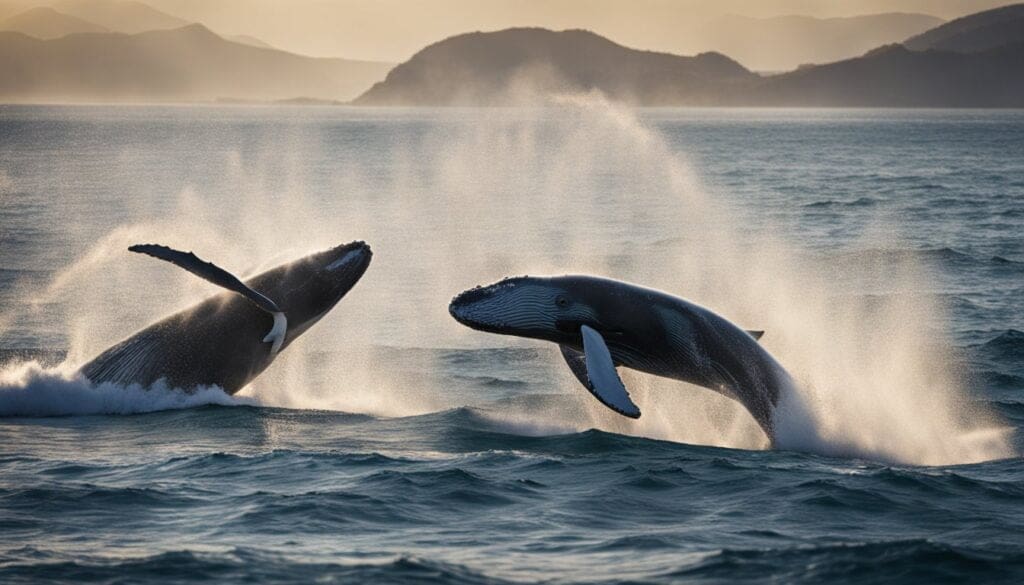

| Whale Species | Migration Destinations | Distance (Feet/Km) | Duration |
|---|---|---|---|
| Gray Whale | Bering and Chukchi Seas (Arctic) to Baja California | 10,000 to 14,000 miles (16,000 to 22,530 km) | 2-3 months |
| Humpback Whale | Polar waters to tropical/subtropical waters | Up to 5,000 miles (8,047 km) | 1-2 months |
| Blue Whale | Tropical breeding grounds to polar feeding grounds | Up to 11,000 miles (17,702 km) | 3-4 months |
| Minke Whale | Tropical breeding grounds to Antarctic feeding grounds | Varies widely | Varies |
| Sperm Whale | Equatorial and temperate waters to high-latitude waters | Varies widely | Varies |
| North Atlantic Right Whale | East Coast of the U.S. and Canada to Florida and Georgia | Up to 1,400 miles (2,253 km) | About 1 month |
Migration is a significant and awe-inspiring phase in the life cycle of whales, showcasing their incredible endurance and navigational skills.
Please note that the distances and durations are approximate and can vary based on environmental factors and individual whale behavior. Whale migrations are among the longest of any mammal and are driven by the need to access rich feeding grounds and suitable breeding areas. These migrations are a testament to their endurance and navigational skills, as they often travel the same routes year after year.
The Cycle Continues – Reproduction and Aging
Creating New Life
A critical stage in the life cycle of whales is reproduction, ensuring the continuation of these magnificent species.
The continuation of the whale species is a fascinating aspect of their life cycle, involving complex mating rituals and reproduction processes. Whale mating rituals are diverse and can include vocalizations, physical displays, and even gentle physical contact. These rituals are not just about attracting a mate but also about establishing connections and compatibility.
Once mating has occurred, the gestation period in whales varies by species. For example, the gestation period for humpback whales is about 11 months, while larger species like the blue whale can extend up to 12 months. The frequency of childbirth also varies; some species may give birth every year, while others, like the blue whale, may only reproduce every two to three years. This infrequency is partly due to the considerable investment required in each offspring, both in terms of the long gestation and the extensive care provided after birth.
The Golden Years
As whales age, their behavior and role within the pod often change. Older whales are typically more experienced and knowledgeable, which can be vital for the survival and well-being of the pod. They often lead migration routes and help younger whales find food and navigate the ocean’s complexities.
In the later stages of the life cycle of whales, older whales demonstrate wisdom and leadership within their communities.
The lifespan of whales varies significantly among species. Some, like the humpback whale, can live up to 50 years, while others, such as the bowhead whale, are known to live over 200 years. Even in their older years, these whales continue to play a significant role in their communities. Their contribution is not just in terms of leadership but also in passing down knowledge and skills to younger generations, a critical aspect of the social structure of whale pods.
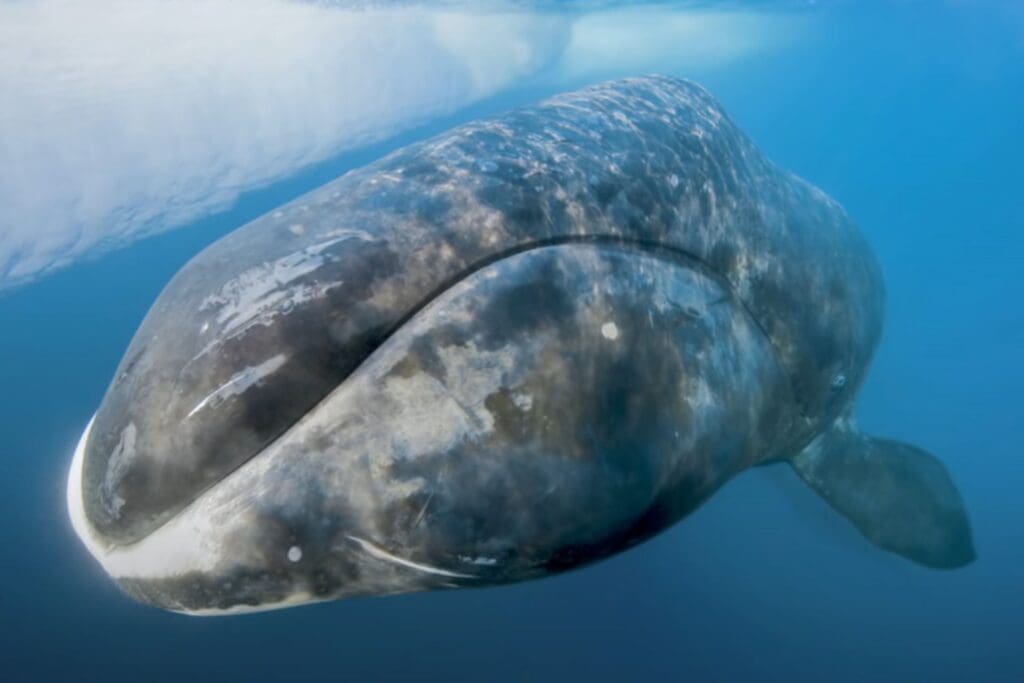

Older whales, with their vast experience and wisdom, are a testament to the resilience and complexity of these magnificent creatures. Observing these older whales in their natural habitat can be a deeply moving experience, offering a glimpse into the enduring nature of life in the ocean.
Conclusion
Reflecting on the life cycle of whales, from birth to aging, highlights the extraordinary journey these marine mammals undertake throughout their lives.
As we conclude our exploration of the whales’ life cycle, we have journeyed through the remarkable stages of these magnificent creatures’ lives. From the miraculous moment of birth, where calves are introduced to the world tail-first, to the playful and learning-filled days of their youth, each stage is a testament to the wonder of nature. We’ve seen how they grow and mature, developing from dependent calves into majestic adults, each with a vital role in their pod. The awe-inspiring process of reproduction and the wisdom the older whales carry remind us of the continuous cycle of life in the ocean.
Witnessing these stages in the wild is an experience like no other. Whale watching offers a unique opportunity to see these gentle giants as they navigate their natural habitat. It’s a chance to observe their behaviors, listen to their songs, and maybe even catch a glimpse of a mother whale nurturing her calf. Each moment spent in the presence of whales is an opportunity to connect with the natural world in a profound and unforgettable way.
We invite you to embark on this incredible adventure and experience the magic of whales firsthand.
Booking a whale-watching tour is not just about seeing these creatures up close; it’s about immersing yourself in their world and gaining a deeper appreciation for their life cycle and their role in our planet’s ecosystem.
Whether you’re a nature enthusiast, a family looking for a unique experience, or someone seeking a deeper connection with the ocean’s wonders, a whale-watching tour promises an enriching and awe-inspiring experience.
Join us on this journey of discovery and marvel at the extraordinary life cycle of whales. Book your whale-watching tour today and prepare to be captivated by the beauty and majesty of these incredible beings.
References:
- NOAA Fisheries. (n.d.). Beluga Whale. Retrieved from https://www.fisheries.noaa.gov/species/beluga-whale
- BBC News. (2023, October 13). ‘Real and imminent’ extinction risk to whales. Retrieved from https://www.bbc.co.uk/news/science-environment-54485407
- Sciencing. (n.d.). Life Cycle of a Whale. Retrieved from https://sciencing.com/life-cycle-whale-5791004.html
- Maturity Inc. (2023, November 24). From Crisis to Conservation. SAVE THE WHALES. Retrieved from https://medium.com/maturity-inc/from-crisis-to-conservation-a7ce337857ef

